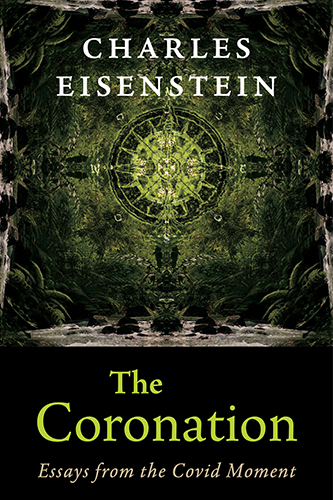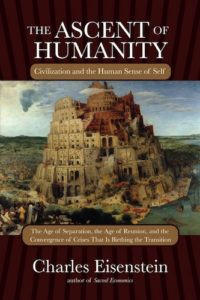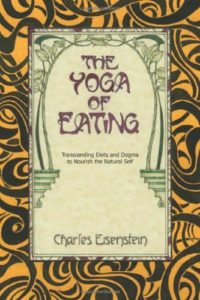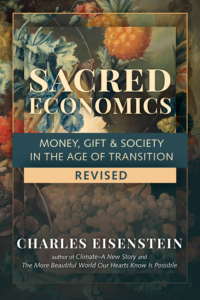Climate — A New Story
Chapters
Chapter 8: Regeneration
Tending the Wild
The regenerative practices I’ve described are rooted in a mindset and way of relating that goes back tens of thousands of years outside civilization, and even as a recessive gene within civilization, the seed of the future.
This section is named after a book by Kat Anderson that describes the relationship between the pre-colonial indigenous people of California and the land. Anderson demolishes the myth that hunter-gatherer people were mere occupants of pristine “nature,” demonstrating their deliberate, sustained influence on the composition of biotopes and species in their territory. Entire landscapes that appeared to the untrained eye of white settlers as wild were anything but. Anderson explains:
Through coppicing, pruning, harrowing, sowing, weeding, burning, digging, thinning, and selective harvesting, they encouraged desired characteristics of individual plants, increased populations of useful plants, and altered the structures and compositions of plant communities. Regular burning of many types of vegetation across the state created better habitat for game, eliminated brush, minimized potential for catastrophic fires, and encouraged diversity of food crops. These harvest and management practices, on the whole, allowed for sustainable harvest of plants over centuries and possibly thousands of years.[21]
When white settlers marveled at the stupendous bounty of fish, game, and wild plant foods that the Indians, it seemed, lazily lived off in an indolent existence, when John Muir wrote his glorious praise of California’s Central Valley with its endless meadows of wildflowers, they were actually looking at a sophisticated garden, lovingly tended for generations. According to the elders Anderson interviewed, “wilderness” was not a positive concept in Native culture; it meant land that was not well tended, land in which human beings were not exercising their duty to protect, enhance, and develop life.
It is easy to see how the perception of indolent natives living in “virgin” wilderness facilitated intrusion onto their territory. After all, they were just inhabiting it; they weren’t developing it, they weren’t doing anything with it. It was going to waste. The ideology of the wild is of a piece with the ideology of conquest.
What looked to European settlers like untamed wilderness was actually the product of millennia of intentional human influence. Calling it wilderness, or “virgin territory,” gave them license to occupy it, cultivate it, “develop” it, and “improve” it.
This attitude is still wreaking its damage today in places like Brazil, where Amazonian tribes attempting to establish rights to their ancestral territory are required to prove the traditional occupancy of that territory. The difficulty is that their mark on the land is not of a kind that the government can easily recognize. They did not establish permanent farms or dwellings. The ideology of “the wild” renders the mutuality of their relationship to the land invisible.
Modern conservationists might be excused for wanting to minimize human impact, since the kind of human impact we’ve seen in the industrial era makes the caring observer recoil in horror. We might be excused for promoting an ethic of “leave no trace.” We might be excused for envisioning a future where humanity retreats to bubble cities, space colonies, or a virtual reality, leaving nature behind to recover its former wholeness, relating to it as a spectacle or a venue for recreation, visiting it perhaps as zero-impact ghosts, observers but not participants.
Tending the Wild suggests a different vision, freeing us from the perceptions with which industrial society has imbued us. Instead of zero impact, it suggests positive impact. Instead of leave no trace, it suggests “leave a beautiful trace” or “leave a healing trace.” It suggests that we ask, “What is our proper role and function in service to the health, harmony, and evolution of this whole of which we are a part?”
We have potent gifts of hand and mind that take the form of technology and culture. These gifts are not meant for us alone. They are meant to serve the wholeness and evolution of Life.
True, as a civilization we have not used our gifts in this way. Even pre-industrial peoples wreaked considerable havoc, contributing to the desertification of the Middle East and other areas, and to the disappearance of North and South America’s megafauna. The latter coincided with dramatic changes in the composition of vegetation: the extinction of mammoths, mastodons, and other megafauna led to forests replacing savannas in many parts of the continent, along with a steep decline in overall biodiversity[22] and nutrient availability.[23] Perhaps it was through the tragedy of these extinctions that the newcomers to North America learned to pay special attention to preserving and expanding what remained of the continent’s biological wealth.
Just because someone is indigenous does not mean he or she, or her culture, knows how to live in mutually beneficial harmony with the earth. It is something each culture must learn. Furthermore, each level of developmental scale requires a new learning.
Extinctions of megafauna and other animals and plants regularly followed human settlement of new lands. Australia, the Americas, New Zealand, Madagascar, and Polynesia all experienced them, suggesting a kind of inevitability to anthropogenic ecocide, which has only accelerated along with our capacity to perpetrate it. Yet, in the end, people in all of these places eventually came into equilibrium with their lands. In most places, as the subsequent biological wealth of the Americas exemplifies, it was an abundant and biodiverse equilibrium. This suggests another possibility beyond Man the Destroyer—that we can learn from our mistakes, that we can mature in our gifts and turn them toward a different purpose.
If so, then we have a lot to learn from indigenous people who sustainably tended and enriched the lands and waters they called home. Sometimes this might entail learning from their actual methods, but more probably it is a matter of adopting the mentality that gave birth to those methods in the first place, since the environment of ten thousand or even five hundred years ago is probably lost forever. That mentality is the product of the worldview I call the Story of Interbeing, a story that unites the diverse mythologies of indigenous peoples. More practically, it means forging intimate, respectful relationships with nature in its specific, local embodiment. Through extended close observation and interaction with nature, we can begin to hear answers to questions like “What does the river need?” “What does the mountain want?” “What is the dream of the land?”
These are the kind of questions that may take long, intimate observation—scientific and otherwise—to answer. There is no sure formula to determine which land should be grazed with compact herds, and which land should be protected from grazing entirely. There is no sure formula to determine which exotic species should be controlled as an “invasive,” and which should be welcomed for their contribution to a new balance.
This latter question is reflected in the debate between restoration ecologists, who seek to reverse ecological damage and bring back native species, and the “new ecologists” who question the assumptions behind the concept of restoration. Science writer Janet Marinelli describes the divide:
At a time when restoration of forests and other ecosystems is increasingly essential, the dominant paradigm of restoration science has been shaken to its core. Restoration ecologists, for whom returning lands to their state before the arrival of Europeans on the continent is still the basic, if rarely stated, goal, have been at loggerheads with so-called new ecologists, who challenge the primacy of native species in conservation thinking and champion the “novel ecosystems” of native and exotic species that increasingly dominate the planet.[24]
This passage hints at an emerging synthesis between the two positions. Human intervention is obviously necessary to restore ecosystems—not necessarily to their former state, but to a state of health. Yet, neither is their former state an irrelevancy. Historical knowledge is useful in understanding the land’s needs, where they came from, and how to meet them. No general formula can tell us, for example, when an invasive species needs to be controlled, and when it is actually an agent of a damaged ecosystem coming back into balance.[25]
Neither “trusting nature” nor “restoring ecosystems” offers a reliable recipe for action. The question is not whether to participate, but how. Absent a recipe, we are left with place-specific, intimate observation and sincere inquiry informed by the understanding of the nonlinear, living nature of each ecological being. That’s how we gain the wisdom to know how to participate in regenerating the health of the places and planet we inhabit.
All of the regenerative practices I’ve described in this chapter partake in a common sponsoring idea. Earth is alive. What is alive, we can love. What we love, we wish to serve. When what we love is sick, we want to ease its suffering and serve its healing. The more deeply we know it, the better we can join its healing.
End Notes
[21] Anderson (2006).
[22] Barnosky et al. (2016).
[23] Doughty et al. (2013).
[24] Marinelli (2017).
[25] For a critical discussion of the complexities of invasive species management, see Tao Orion’s book Beyond the War on Invasive Species. Often the efforts to control invasive species do more harm than good.






